NoPro contributor Leah Ableson discusses her immersive theatre show The Bylerly High School Holiday Reunion, which ran this past December in Jersey City, New Jersey, as part of No Dominion Theatre Co.’s H.A.T.C.H. Series.
This piece contains light spoilers for the show.
When our team at The Haven Project first envisioned a holiday show, we saw a reunion of people, comprised of those faces we all knew personally from our own post-college days. Kevin, the pyramid schemer. Brandy, the stoner. Charlotte, the hostess. Dan, the wallflower. Steve, the wicked charmer. We had all encountered them before, but what parts of them didn’t we know?
A little over a year ago, director Mike McQuade, writer Julianne Marzulla, and I founded The Haven Project with a single mission in mind: to explore the concept of “safety.” In 2017, we had all noticed the concept of the “safe space” being demonized in both political and day-to-day conversation. We wanted to reclaim safety as a natural and necessary human desire by digging deeper into what makes people feel safe versus what makes them feel in danger. Through talkbacks with our contributors, audiences, and friends, we became acquainted with the sheer variety of safe spaces, from booming drag clubs to empty rooms. The contrast of these inspired us to dig into the idea that a peaceful environment for some may be a dangerous one for others, much like the “empty room” introvert finding themselves in the club.
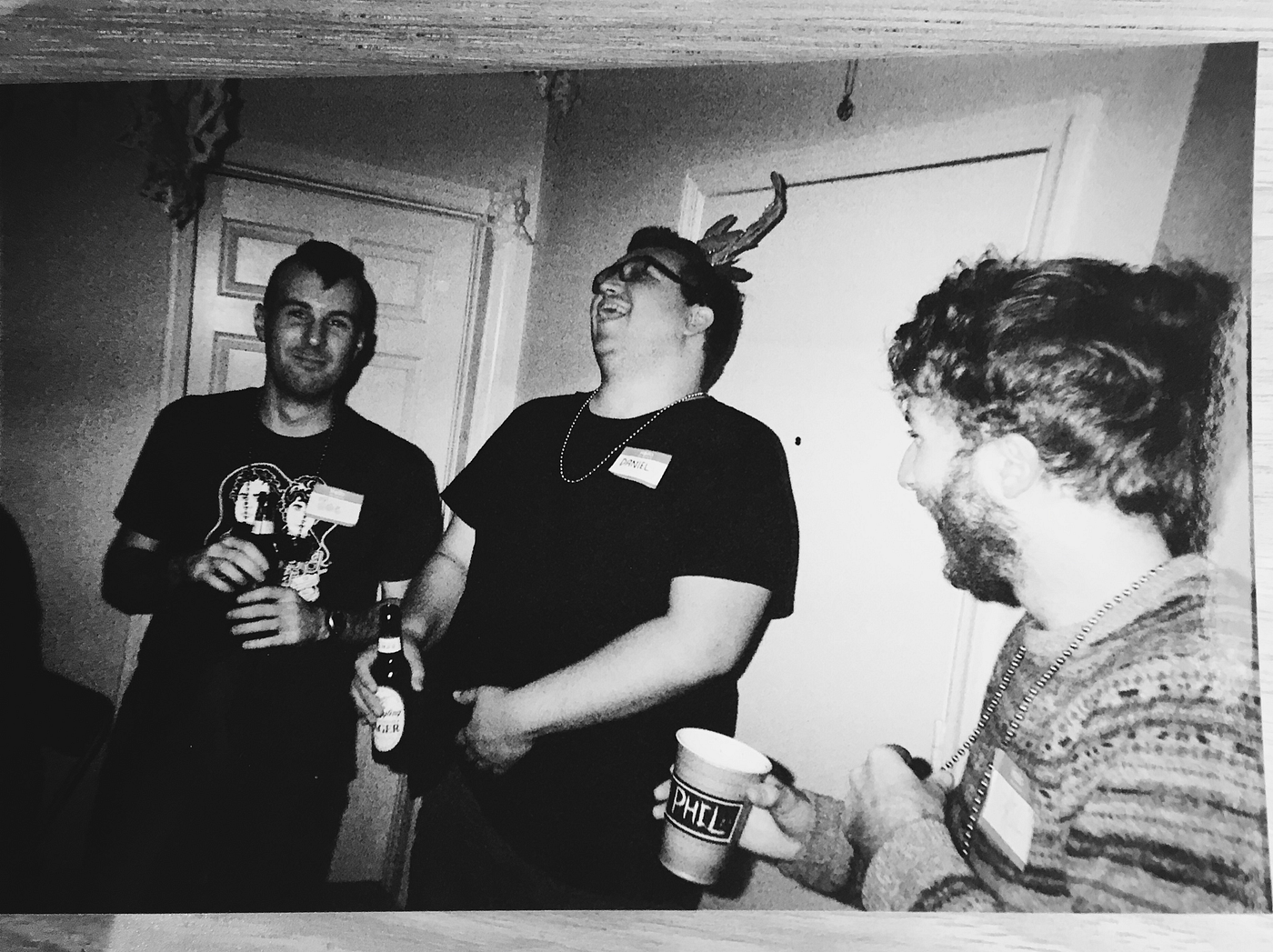
In this sense, we were drawn to the atmosphere of a party for the setting of Byerley High School Holiday Reunion. We found that parties — particularly those shared with people from one’s past — are a naturally performative and nuanced space. Most people enter a social gathering wearing a public-facing persona, and yet may find themselves revealing more of their private selves when they begin to feel safe (particularly in a one-on-one or small group atmosphere).
Additionally, we opted to make Byerley a reunion with high school friends to layer in the complexity of childhood assumptions and connections already established before entering the environment. For example, did these classmates see you thrive in school? Did you see them through their very public breakups? We wanted to challenge our audience to meet the narrative midway and discover facts already existing within our plot. Even further, we wondered if audiences would take to the idea that they also had a narrative within the show, which the characters knew about, but they did not.
Our goal was to see when audience members felt safe enough to share their own stories or protect others, and when they felt inclined to remain silent. The audience had full reign of the story, being able to respond, ask questions, and move about however they wished. Their choices ruled the paths of each of our characters, and the audience could cause real change in our environment. Whether asking a character to please leave another person alone, or encouraging a character to apologize to their ex, our audience found ways to develop our story beyond what we had written. By encouraging their agency, we hoped to reveal the truth behind our audience’s decisions, as well as the depths of our characters (who on the surface might appear to be different than they were).
Heading into the project, we assumed that a small-scale, low-budget immersive piece in a residential location might be too realistic for audience members to truly “escape” into the world we created. After all, we had chosen as ordinary of a space as you can find: a member of our team’s two bedroom apartment. We found ourselves collecting folding chairs from our producing team (the wonderful No Dominion Theatre Co.) just so the audience had places to sit, and holding one-on-ones in bathtubs and bedroom closets. Finding the right balance between “performance” and “party” was intimidating, and we worried about audience members feeling like they hadn’t gotten “what they paid for.” However, it seemed that many people enjoyed the homegrown nature of our environment, which was great news. This feedback has inspired us to revisit the idea of worth and value of a piece, and evaluate what we can offer to our audiences.
We also marketed Byerley as having a mystery element, implying secrets that one could uncover (particularly about the host and why he was banned from attending the official high school reunion). We anticipated that this would be the main draw of the work, but were surprised to see audience members drawn evenly towards all of the different storylines. Our lesson: different people not only find safety in different places but with different people. There were audience members who found themselves deeply connected with Charlotte, the host’s ex-girlfriend who was still cleaning up her old flame’s messes. On the other hand, many took on the role of mother themselves, protecting and encouraging a reformed burnout named Brandy, looking to cut back on the weed. Now, we consider “safety” as not solely a question of environment and situation, but also as an interpersonal challenge that we can play off of when creating our characters. We see now how, as a community, we seek to feel safe with others, and to keep others safe ourselves.
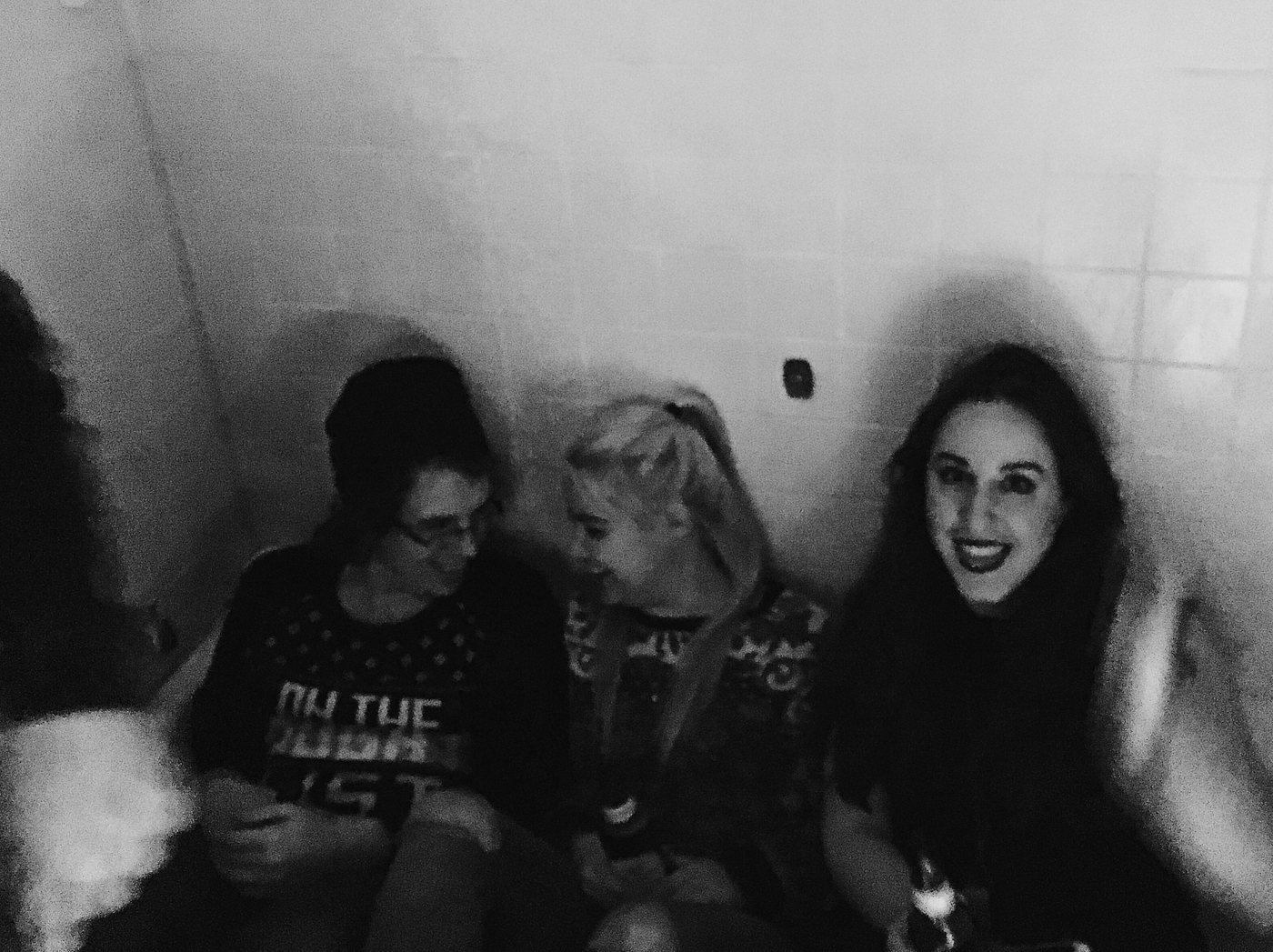
Our team also met a few unexpected challenges when designing the show’s environment. We had assumed that working in a small, residential space would be conducive towards more one-on-one, intimate interactions. Though this was true in some sense, we hadn’t accounted for light and sound leaks between rooms, which presented itself as a hurdle particularly when we had “safe” and “dangerous” scenes operating in close proximity, but wanted to keep them as separate as possible.
During the script-writing process, we had placed perhaps the most intimate and comforting scene in an emptied laundry closet, which appealed to us all as a safe space; it felt cozy and warm, cocooning our audiences in a private sphere. The scenes that took place in this area involved soothing someone moved to tears by their favorite Christmas movie, and reminiscing over treasured (and very real) high school memories that the audience members shared with each other. It was a place that needed absolute privacy. However, in practice, not only did this room have the worst atmospheric leaks, but it was uncomfortably small and didn’t have a lock on the door. We attempted and failed to soundproof the already-tiny room with foam, eventually removing the door altogether and replacing it with a very thick curtain. Though this helped with claustrophobia issues and light leaks, it still wasn’t exactly what we had envisioned; we learned a big lesson in accounting for coinciding action when writing.
In a similar vein, we had planned to track the action of the show off of different musical cues, with each scene starting in time with a different Christmas song. However, finding the correct balance of sound in a home, as well as within a party atmosphere, was much more difficult than we anticipated. In a residential area, we had naively overlooked the idea of “disturbing the neighbors,” an absolute rookie mistake. As we fiddled with finding the proper volume level, as well as the intimidating task of locating enough outlets per speaker and light, our actors faced another challenge: learning to run the whole show with absolute time precision. Because each action was synced up with a new song starting, the performers had to know exactly where they were in the timeline, even if the source of the music was a room or two away. Since we were working in a natural (and small) space, there was little flexibility for hiding speakers in our set; where larger productions may be able to covertly hide a speaker in the set, we were stuck with one speaker, hooked up to laptop, peaking out from the bedroom we were using as a backstage area. As the night progressed, those of us on the production side shared the duty of toggling the music and the volume to keep up with the pacing and needs of the show.
Still, our team of actors rose to the occasion of memorizing each cue with flying colors. However, it proved to be too hectic of a plan by nature; we ended up scrapping our musical cues altogether, replacing them with a more recognizable (but less natural) sound effect — the ringing of jingle bells on loop. Luckily, though this felt disruptive to us, we found the audience didn’t really notice, at least as far as we could tell. Either way, this piece taught me about the technical finesse required in the creation of sound design in an immersive space.
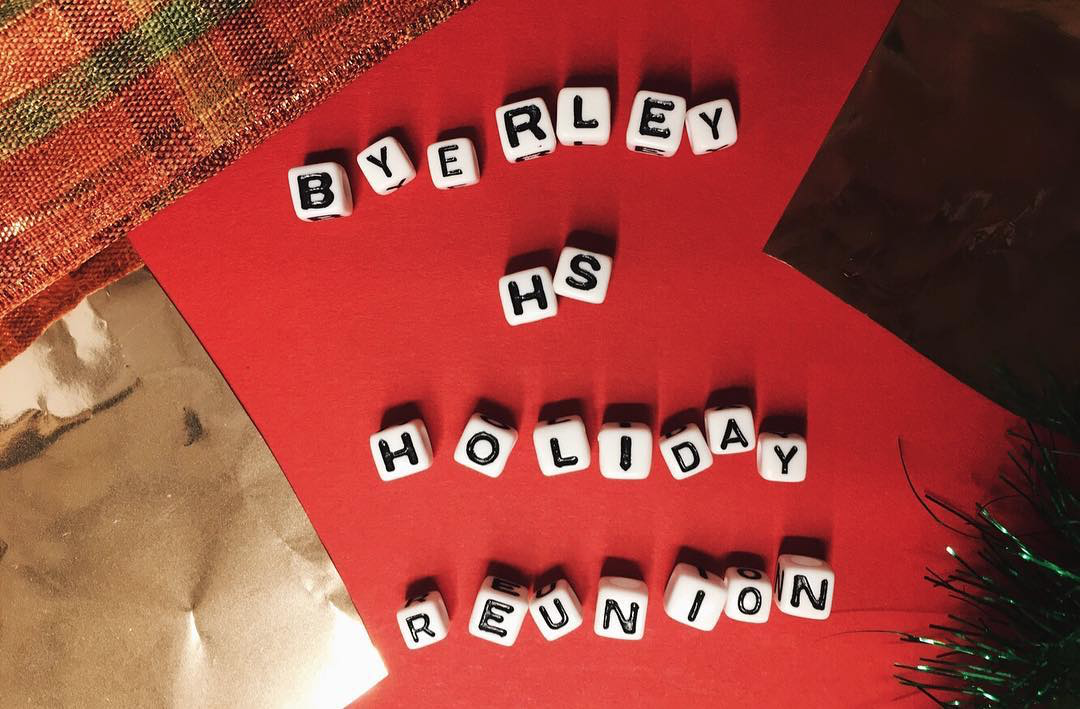
Overall, our team found Byerley High School Holiday Reunion to be full of hard lessons as well as absolute joy. We got to see the audiences really grab the bull of agency by its horns and connect with our characters in ways we couldn’t even begin to anticipate. “Safety” and “danger” are powerful beasts. We saw a brand new limb from each with this production.
In the future, we at The Haven Project can’t wait to dig even deeper into the safe spaces we find: not just in our environment, but in the people around us. We are currently looking into a safe space our entire team has experienced together: the social communities found on the Internet. This spring, we dive further into what happens when your safest spaces are the people you’ve never met in person.
Leah Ableson is a contributor to No Proscenium based out of New York City; you can follow The Haven Project on Instagram for information about future projects. Byerley High School Holiday Reunion was put on as part of No Dominion Theatre Co.’s H.A.T.C.H. Series. Find more info about No Dominion and the H.A.T.C.H. Series on their Facebook page.
No Proscenium is a labor of love made possible by our generous backers like you: join them on Patreon today or the tip the author of this article directly on Gumroad:
In addition to the No Proscenium web site, our podcast, and our newsletters, you can find NoPro on Twitter, Facebook, YouTube, Instagram, in our online community Everything Immersive, and in our Slack forum.


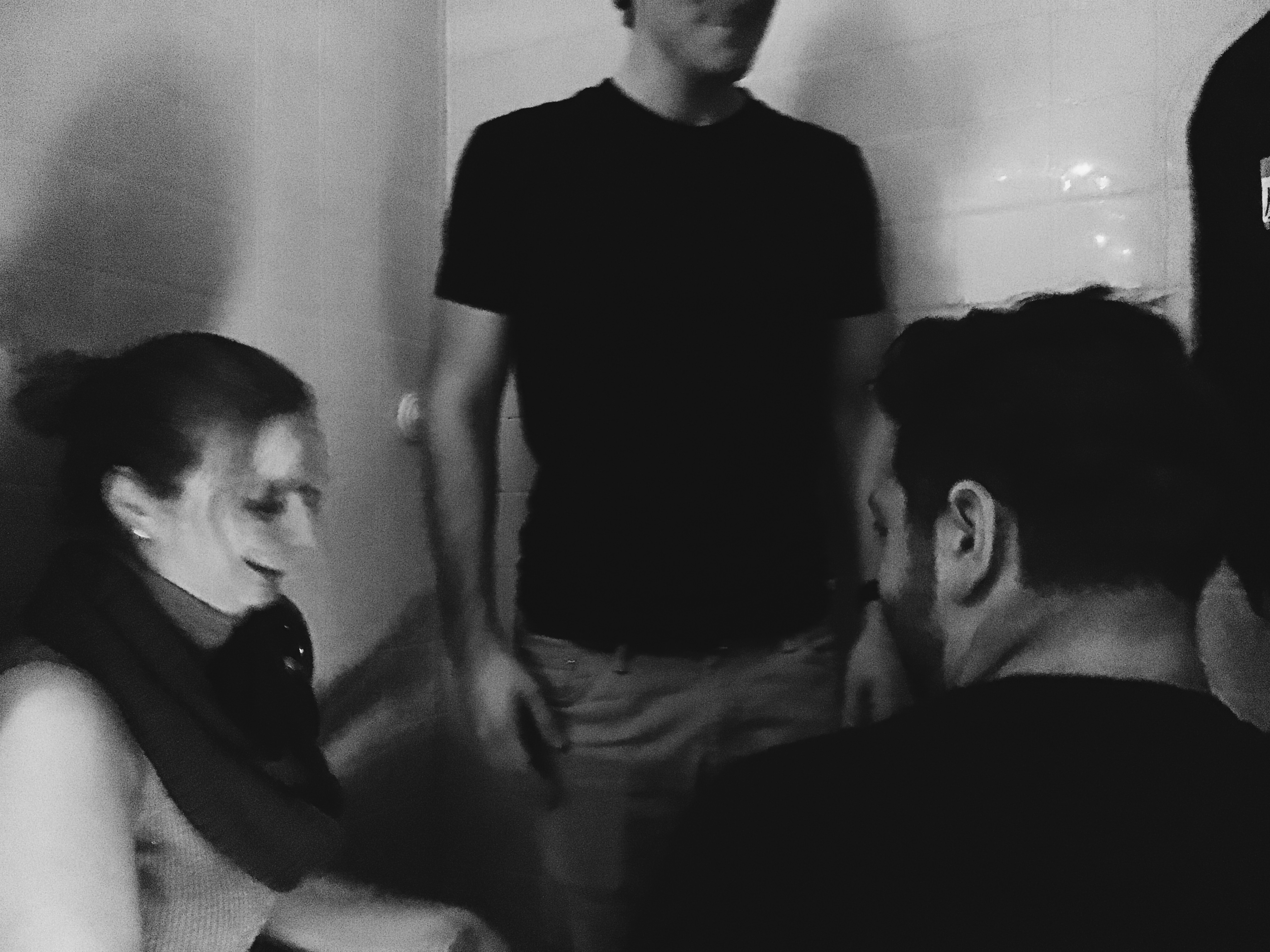
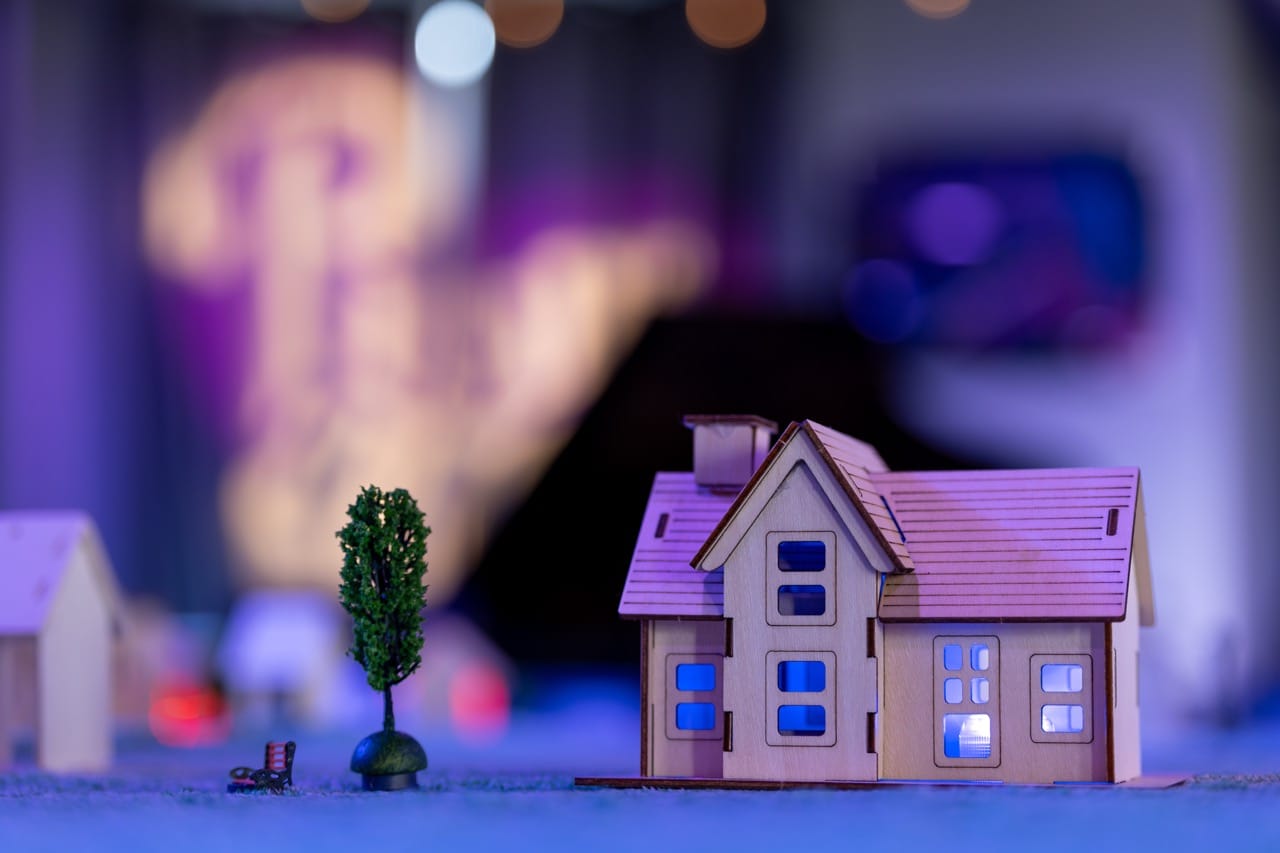











Discussion